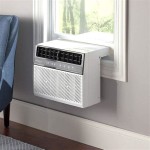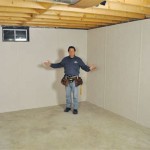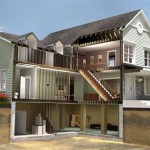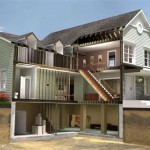Best Insulation Between Basement and First Floor
Insulating the space between your basement and first floor is crucial for maintaining a comfortable indoor environment and reducing energy costs. Several insulation options are available, each with its advantages and disadvantages. Here are some of the best insulation materials to consider:
1. Spray Foam Insulation: Spray foam insulation is an excellent choice due to its high R-value and airtight seal. It expands to fill every nook and cranny, preventing air leakage and improving energy efficiency. However, it is more expensive than other insulation options and requires professional installation.
2. Batt Insulation: Batt insulation, made from fiberglass or cellulose, is a cost-effective and easy-to-install option. It comes in pre-cut batts that fit between joists or studs. While it is not as effective as spray foam, it provides good insulation value and reduces noise transmission.
3. Loose-Fill Insulation: Loose-fill insulation, such as cellulose or fiberglass, is poured into place to fill cavities. It conforms to irregular shapes and is suitable for hard-to-reach areas. However, it may settle over time, reducing its effectiveness.
4. Rigid Foam Board Insulation: Rigid foam board insulation, made from polystyrene or polyisocyanurate, is a durable and moisture-resistant option. It comes in sheets that can be cut and fitted to the desired size. It provides excellent insulation value and is suitable for use in walls, ceilings, and floors.
5. Reflective Insulation: Reflective insulation consists of a layer of reflective material, such as aluminum foil, that reflects radiant heat back into the living space. It is often used in combination with other insulation materials to enhance overall performance.
6. Acoustic Insulation: Acoustic insulation, such as fiberglass or mineral wool, is specifically designed to reduce noise transmission. It is effective in blocking sound from outside and between rooms. It can be installed in walls, ceilings, and floors to create a quieter living environment.
The best insulation for your basement and first floor will depend on your specific needs, budget, and the accessibility of the space. Consider the following factors when choosing an insulation material:
- R-value: The R-value measures the resistance to heat flow. A higher R-value indicates better insulation.
- Airtightness: Good insulation should create an airtight seal to prevent air leakage and improve energy efficiency.
- Moisture resistance: Insulation materials should be moisture-resistant to prevent mold and mildew growth.
- Cost: Different insulation materials vary in cost, so it is essential to consider your budget.
- Installation ease: Some insulation materials are easier to install than others. Consider the accessibility of the area and your DIY skills.

Insulating Rim Joists Greenbuildingadvisor

Where To Insulate In A Home Department Of Energy

7 Steps To An Energy Efficient House 1 The Basement Greenbuildingadvisor

Adding Insulation To Basement Walls Fine Homebuilding

What S The Best Way To Insulate A Basement Slab Greenbuildingadvisor

Basement Rim Joist Insulation For Cold Floors Ecotelligent Homes

Should I Insulate My Basement Ceiling And Walls Aire Serv

How To Insulate Your Basement Like A Pro

Keeping The Heat In Section 6 Basement Insulation Floors Walls And Crawl Spaces

Keeping The Heat In Section 6 Basement Insulation Floors Walls And Crawl Spaces
Related Posts







